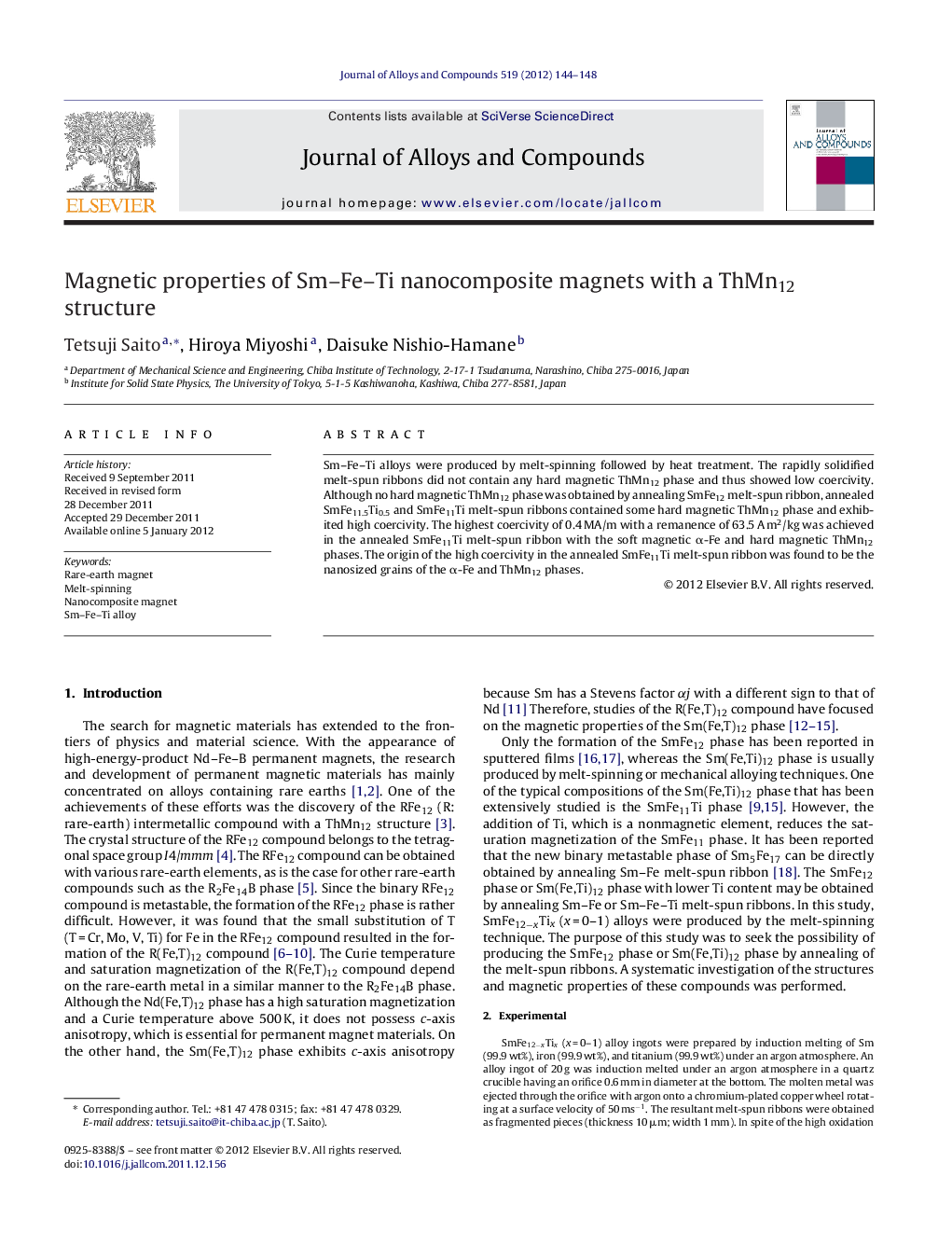| Article ID | Journal | Published Year | Pages | File Type |
|---|---|---|---|---|
| 1616547 | Journal of Alloys and Compounds | 2012 | 5 Pages |
Sm–Fe–Ti alloys were produced by melt-spinning followed by heat treatment. The rapidly solidified melt-spun ribbons did not contain any hard magnetic ThMn12 phase and thus showed low coercivity. Although no hard magnetic ThMn12 phase was obtained by annealing SmFe12 melt-spun ribbon, annealed SmFe11.5Ti0.5 and SmFe11Ti melt-spun ribbons contained some hard magnetic ThMn12 phase and exhibited high coercivity. The highest coercivity of 0.4 MA/m with a remanence of 63.5 A m2/kg was achieved in the annealed SmFe11Ti melt-spun ribbon with the soft magnetic α-Fe and hard magnetic ThMn12 phases. The origin of the high coercivity in the annealed SmFe11Ti melt-spun ribbon was found to be the nanosized grains of the α-Fe and ThMn12 phases.
► Sm–Fe–Ti nanocomposite magnet with ThMn12 phase was successfully produced melt-spinning followed by heat treatment. ► The highest coercivity of 0.4 MA/m with a remanence of 63.5 A m2/kg was achieved in the annealed SmFe11Ti melt-spun ribbon. ► The origin of the high coercivity in the annealed SmFe11Ti melt-spun ribbon was found to be the nanosized grains of the α-Fe and ThMn12 phases by TEM studies.
